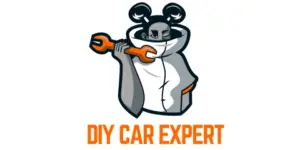Jeep automatic transmission issues often show up as slipping gears, overheating, and erratic shifting. These problems usually stem from worn parts, low fluid levels, or malfunctioning control modules. To check for slipping, start with the fluid level. Erratic shifting might point to a throttle position sensor issue. Don’t forget to inspect for leaks around seals and gaskets. Keeping up with maintenance can help avoid overheating and keep your ride smooth. For more tips on solutions and prevention, keep reading!
Key Takeaways
- Common issues include slipping gears, overheating, delayed engagement, and fluid leaks affecting performance and reliability.
- Worn components, low transmission fluid, and control module malfunctions often cause slipping gears.
- Regular maintenance, including checking fluid levels and replacing fluids, prevents major transmission problems.
- Overheating symptoms include slipping, strange noises, and dark, burnt fluid; immediate action is necessary to prevent damage.
- Identifying fluid leaks involves checking seals, gaskets, and lines for damage, which can indicate underlying transmission issues.
Common Automatic Transmission Issues in Jeeps
Common automatic transmission issues in Jeeps include slipping, overheating, and delayed engagement.
Common automatic transmission problems in Jeeps are slipping, overheating, and delayed engagement, impacting performance and reliability.
- Slipping: This happens when the transmission changes gears unexpectedly, causing a loss of power.
- Overheating: This can result from low fluid levels or a faulty cooler, which may lead to damage over time.
- Delayed engagement: You may notice a lag when you shift into gear, which can disrupt your driving experience.
To avoid these problems, regular maintenance is key.
Check fluid levels and replace fluids on time.
Being proactive helps prevent costly repairs and keeps your Jeep reliable on various terrains.
Causes of Slipping Gears
Slipping gears in your Jeep can happen for a few reasons. Common causes include worn-out parts, low transmission fluid, and problems with the transmission control module.
- Worn Components: Parts like clutches and bands may wear out over time. When they do, they can’t grip properly, leading to gear slippage.
- Low Transmission Fluid: If your transmission fluid is low, it causes a drop in hydraulic pressure. This can make shifting gears difficult.
- Transmission Control Module Issues: A faulty module might fail to send the right signals for gear changes.
Regular maintenance, like checking and replacing fluids, helps avoid these problems.
Taking care of your Jeep can prevent expensive repairs and ensure it runs smoothly.
Diagnosing Erratic Shifting Problems
To fix erratic shifting in your Jeep, check the following:
- Transmission Fluid: Ensure the fluid level is adequate. Low fluid can cause shifting issues.
- Transmission Control Module: This part controls the gear shifts. It may need testing or reprogramming.
- Throttle Position Sensor: Inspect this sensor. It affects how your Jeep shifts gears.
- Diagnostic Scanner: Use this tool to find error codes. It helps identify problems with the sensors or computer system.
Start with the fluid level, then move on to the other components if needed.
Fluid Leaks: Identification and Solutions
| Leak Source | Symptoms |
|---|---|
| Transmission Seals | Puddles under the Jeep |
| Gasket Failures | Fluid stains on the engine |
| Line Damage | Hissing noises, drips |
| Cooler Failures | Fluid on radiator |
| Pan Gasket Leaks | Low transmission fluid |
Check the transmission fluid level and color often.
Overheating Transmission: Symptoms and Remedies
Overheating can seriously damage your transmission. Watch for signs like slipping gears, strange noises, or warning lights.
- Check the transmission fluid level. Low fluid can lead to overheating.
- Look at the fluid’s color and smell. Dark, burnt fluid means you have a problem.
- If overheating occurs, stop driving right away to avoid more damage.
- Let the transmission cool down before checking for leaks or blockages in the cooling lines.
- If the fluid looks dirty, consider changing it.
- A transmission cooler can help keep temperatures down during heavy towing or off-roading.
Preventive Maintenance Tips for Jeep Transmissions
- Regularly check and change the transmission fluid for proper lubrication.
- Inspect the transmission filter for clogs and replace it when needed.
- Watch for unusual noises or slipping and fix these issues quickly.
People Also Ask
What Are the Signs of a Failing Transmission Control Module?
If you’re noticing erratic shifting, delayed engagement, or warning lights on your dashboard, it’s likely your transmission control module’s failing. You might experience stalling or unusual engine behavior, signaling a need for immediate attention.
How Does Towing Affect Jeep Automatic Transmissions?
Towing puts extra strain on your Jeep’s automatic transmission, causing overheating and increased wear. It’s crucial to ensure your vehicle’s properly equipped and to monitor fluid levels to maintain optimal performance and longevity.
Can a Faulty Torque Converter Cause Transmission Problems?
Yes, a faulty torque converter can definitely cause transmission problems. It affects fluid flow and pressure, leading to issues like slipping or overheating. Addressing it quickly can prevent further damage and ensure smoother performance.
What Is the Average Lifespan of a Jeep Automatic Transmission?
The average lifespan of a Jeep automatic transmission is around 150,000 to 200,000 miles, depending on maintenance and driving conditions. Regular servicing can help extend its life, so keep an eye on those fluid levels!
Are There Specific Jeep Models More Prone to Transmission Issues?
Yes, some Jeep models, like the Wrangler and Grand Cherokee, tend to have more transmission issues. If you own one of these, it’s wise to stay vigilant and address any signs of trouble promptly.
Wrapping Up
To tackle Jeep automatic transmission problems, stay on top of maintenance and catch issues early. Problems like slipping gears or leaks can get pricey fast. By monitoring fluid levels and temperature, you can boost your Jeep’s performance and lifespan. Be proactive with maintenance to keep your transmission running smoothly for the long haul.
